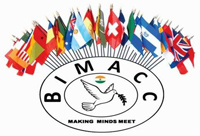
Justice for All – Myth or Reality
Justice delayed is justice denied is a common maxim. However it is important to remember that justice in haste is a waste. Are the courts driven by statistics? Are the courts focused more on disposal of cases rather than dispensation of justice? It is necessary to examine some of the statistics about the courts and judges in India as reported by https://www.thehindubusinessline.comSeptember 24, 2018:
India has 19 judges per 10 lakh people on an average, according to Law Ministry data, which also states that the judiciary faces a combined shortage of over 6,000 judges, including over 5,000 in the lower courts itself.According to the data, part of a document prepared in March this year for discussion in Parliament, the judge-population ratio is 19.49 per million (10 lakh) people.
The document states that while the subordinate courts have a shortage of 5,748 judicial officers, the 24 high courts face 406 vacancies. The working strength of the lower judiciary is 16,726 while the approved strength is much higher at 22,474. In the case of high courts, the approved strength is 1079, the actual strength is 673.The Supreme Court, with a sanctioned strength of 31 judges, has six vacancies. Thus, the total number of vacancies in the SC, the HCs and the lower courts come to 6,160 judges.
The debate on the judge-population ratio was re-ignited by then Chief Justice of India T S Thakur in April, 2016 when in the presence of the Prime Minister, he had lamented the governments “inaction” in increasing the number of judges from the present 21,000 to 40,000 to handle the “avalanche” of litigations, saying, “You cannot shift the entire burden on the judiciary“. He had said “nothing has moved” since 1987 when the Law Commission had recommended increase in the number of judges from 10 judges per 10 lakh people to 50.
But later the government had pointed out that in the 245th report, the Law Commission had observed that filing of cases per capita varies substantially across geographic units as filings are associated with economic and social conditions of population. The Commission had, according to the government, found that in the absence of complete and scientific approach to data collection across various high courts, the rate of disposal method to calculate the number of additional judges required to clear the backlog as well as to ensure that the new backlog is not created, is more pragmatic and useful.
Recently, Law Minister Ravi Shankar Prasad had urged chief justices of the 24 high courts to speed up recruitment of judicial officers for the lower judiciary as one of the reasons for high pendency is lack of judges. He had urged the chief justices to hold timely examination and interviews to recruit judges for lower courts. In his August 14 letter, Prasad pointed out that there were a total of 2,76,74,499 cases pending in the District and Subordinate Courts of the country. “One of the underlying reasons behind the high pendency is sometimes the inordinate delay in filling up the vacancies of judicial officers,” he wrote in the almost identical letters.
The situation hasn’t improved. The above figures do not include millions of cases pending before various revenue courts at taluk and district levels, various central and state administrative tribunals and appellate tribunals, Tax Tribunals, National Company Law Tribunals, and the list goes on. Tribunalisation has not reduced the pendency of cases before the courts, on the contrary the pendency of cases before the quasi judiciary has increased alarmingly and has gone unnoticed. The reality is not a “ Docket Explosion” but “Docket exclusion”.
A 2009 survey conducted by Lexquisite in five states among a sample size of 5000 disputants drawn from rural, semi-urban, urban and metro cities revealed the following facts:
- 51% of the disputants want to litigate and seek alternate methods to resolve disputes. The reasons given are many which include
- Litigation is costly
- Litigation is time consuming,
- Outcome of litigation is uncertain,
- They believe courts cannot give justice,
- Going to court is a taboo, and they have family restrictions
- 31% of the disputants believe that their disputes cannot be resolved but they go to family or community leaders as panchayatdars, local politicians, spiritual leaders, and at times the local police station and convert civil cases into criminal cases.
- 9% of the disputants got to the mafia and resort to violence for resolution of disputes such as the recovery of debt or credit card dues, or eviction of a tenant.
- Only 9% of the disputants come to lawyers and courts.
We complain of a “docket explosion” with only 9% of the disputants that believe in the court system; 91% of the disputants remain excluded from the regulated justice dispensation mechanism. Imagine, the plight of the judiciary and the litigants if there is a marginal shift by even 1% of the disputants who have hitherto avoided the courts. It will be impossible for the judicial system in India to handle such a situation, as we need more judges, more courts, more staff and above all funds to support the judiciary.
The general perception is that higher courts are more conscious of pending cases and are anxious to dispose cases rather than focus on administration of justice. A common complaint is that the courts find it convenient to dismiss most of the cases, at the threshold.
The Supreme Court of India functions both as a constitutional court as well as Final appellate court. On a miscellaneous day (Monday and Fridays when new cases are posted for admission), the courts spend a few minutes deciding if a new case ought to either be dismissed or have notice issued to the other party. The fact is that most cases are dismissed at the admission stage and notices are issued only in few cases. It is pertinent to note that the most of the special leave petitions, according to the judges, are frivolous and a waste of time. This anomaly is because we do not have a final court of appeal in each state or zone, and cases are taken up on appeal to the Supreme Court, which ought to have been handling only constitutional matters.
It is good that the Government and the Courts have always been concerned about the backlog of cases. Section 89 of the Civil Procedure Code has been amended allowing civil courts to refer appropriate cases for Arbitration, mediation or Lok Adalats. Since 2007 courts have promoted court annexed mediation. But these have not helped to reduce the back log in any way. No serious efforts have been made to promote pre-litigation mediation, except for the recent amendment to The Commercial Courts Act 2016 by introducing section 12 A, thus enabling pre-litigation mediation through the legal services authority. Another easy way for the Government to reduce the pendency of cases in the courts is to transfer cases to tribunals, however this is often counterintuitive.
Added to this Section 8 of the Insolvency and Bankruptcy Code 2016 in a way encourages litigation, instead of resolution of disputes through negotiation or mediation. The advent of the draconian Code has forced commercial disputants to either initiate legal proceedings/arbitration, or face the risk of insolvency proceedings before the NCLT.
The lawmakers and the judiciary have failed to realise that majority of the disputants shy away from the courts. Is it not the duty if the government to provide justice for all? In the Peoples Republic of China, every village, commune, town or city has a set of dispute resolvers who are called as “People Mediators”. They may not have been trained formally in the art of modern mediation but the government has ensured that the neutral and independent people mediators help people resolve small family and commercial disputes within the area, thus, reducing the number of litigants who flock to the courts.
In India courts are viewed with morefear than respect. It is perceived that the judiciary is not people friendly. However, blaming the judiciary is futile, because the reality is that the judges in India are overburdened compared to their counterparts in the West. The US, has 134 judges for a population of a million who handle a few cases a year compared to their Indian equivalents who handles hundreds of cases a day.
What is the remedy? How can people resolve disputes small or big without going to the courts? Where are we going wrong?
In the present situation one should realise that courts are not the primary dispute resolution mechanism, courts are just another alternative to the pre-existing dispute resolution mechanism. It is the duty of the Government as well as the judiciary to enable justice to reach every resident of this country, and such a system should be affordable, timely and efficient.
People in power should recognise and encourage Institutional Alternative Dispute Resolution Centres, which are not-profit making commercial bodies. Such centres should train arbitrators and mediators so that a common man can use the system even for petty disputes without approaching the courts. Justice should be virtually at the door steps of the citizens, every village, town, cities and wards in metros.
About BIMACC
In September 2013 the Bangalore International Mediation, Arbitration and Conciliation Centre (BIMACC) was launched as India’s only comprehensive, not-or-profit institutional ADR Centre, recognised by UNCITRAL as well as he Government of India. The Board is headed by Justice Cyriac Joseph, former Judge Supreme Court of India and comprises of Justice Deepak Verma, former judge Supreme Court, Justice Banurmath, former Chief Justice of Kerala, Mr. Lalith Basin, President of Society of India Law Firms and Bar Association of India, Mr. Ghanshyam Dass, former MD NASDAQ, Asia and Consultant in KPMG, Mr. Nagin Khincha, Chartered Accountant, Dr. Chenraj Roychand, Chairman Jain University, Mr. Madhsudhan, former Head NIIT US Ventures, presently CEO VectraSpan, Atlanta and Mr. Thiruvengadam BC an eminent lawyer and international Arbitrator and mediator.
BIMACC in the last 6 years has emerged as the most
preferred ADR Centre in the world, as it is economical compared to well establish
global players. Its easy and disputant friendly rules have made it the preferred
choice for dispute resolution among the global business communities.[1]BIMACC
has been conducting free mediation clinics for the economically weaker sections
of the society and have helped hundreds to resolve their disputes. BIMACC works
closely with organizations such as the Bar Association of India, Society of
Indian Law Firms, Chartered Institute of Arbitrators, India, Institute of
Company Secretaries of India, Jain University, National Law School of India
University, and Bangalore etc. It has
signed cooperation agreements with the Federation of Mediation Centre of France
(FFCM), InMedizone ADR Centre, Italy, International Arbitration Centre of Egypt
(IAC), Kunming International Arbitration Centre, Hong Kong International
Arbitration and Mediation Centre and Macau International Arbitration and Mediation
Institute. It imparts training in
arbitration, mediation, neutral evaluation, collaborative settlement, conflict
management and mentoring in India and abroad.
Its honorary Director Mr. Thiruvengadam has been featured by LexisNexis
as one of the 100 Legal Luminaries of India. The Kunming International
Arbitration Centre, China has honoured
him as its Honorary International Consultant.
Adam Clark School of Law, District of Columbia University has also
honoured him for his outstanding services and contribution in the field of law.
[1] https://www.youtube.com/watch?v=5YRRSg6sM9s&t=1s
